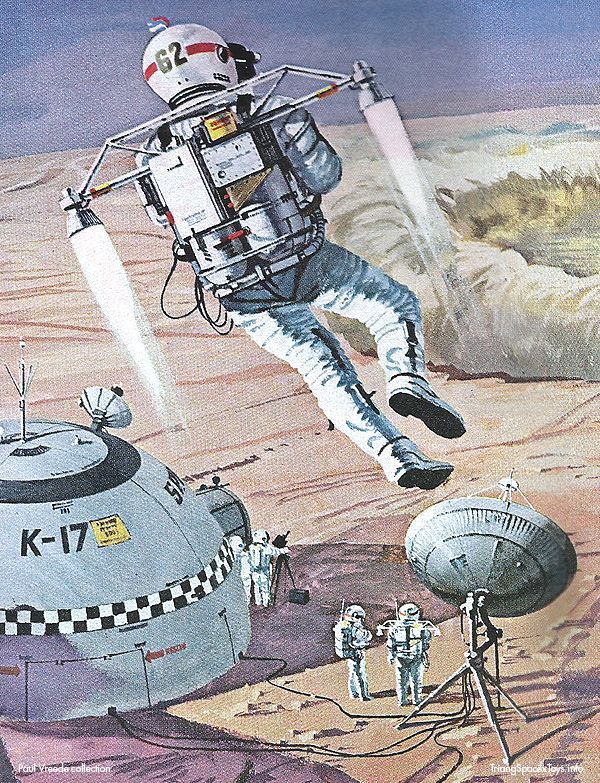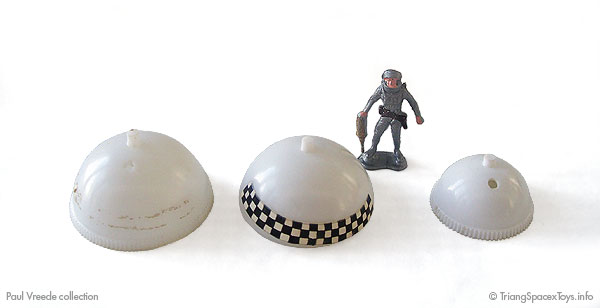
Sizes
Diameter
Height
Diameter
Height
36 mm
20 mm
25 mm
15 mm
1 7/16 in
13/16 in
1 in
5/8 in
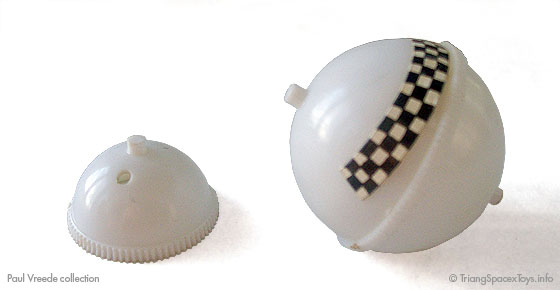
Features
Two types of large dome fit together to make a ball, which originally served for the rolling eyes of the
LP Space Dog
(below - use link on that page or your browser's Back button to return here). The toy that used the smaller dome(s) has not yet been found.
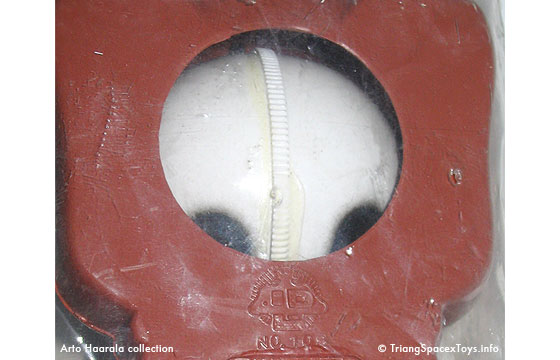
Colours
Usually white, but also seen in yellow
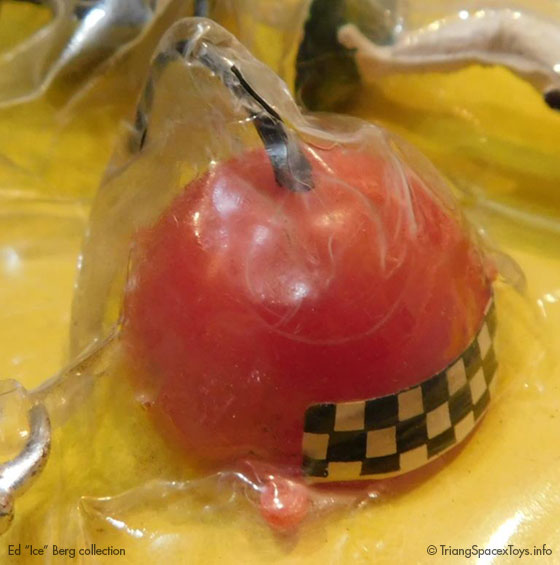
LP adapted the transparent dome of their saucer toy into yet another small dome, fitted with an antenna and chequered sticker.
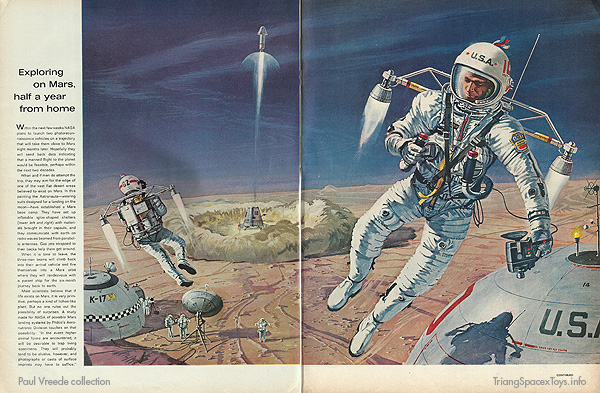
Dome buildings were a common feature in speculative art in the 1960s, including the much more serious work by Robert McCall as featured in Life magazine (issue of 2 October 1964). Inflatable domes could be coated with locally-made concrete, and ball-shaped fuel or oxygen tanks could be recycled into buildings as well. The advantage of a dome also being its ability to withstand pressure - particularly differences in exterior and interior atmospheric pressure.
